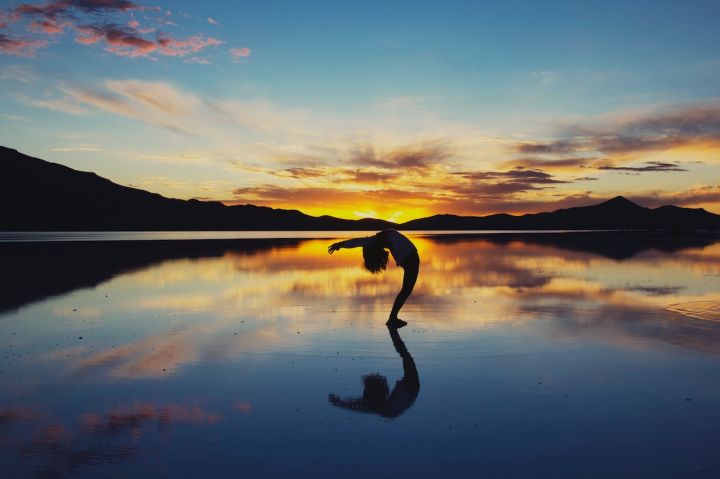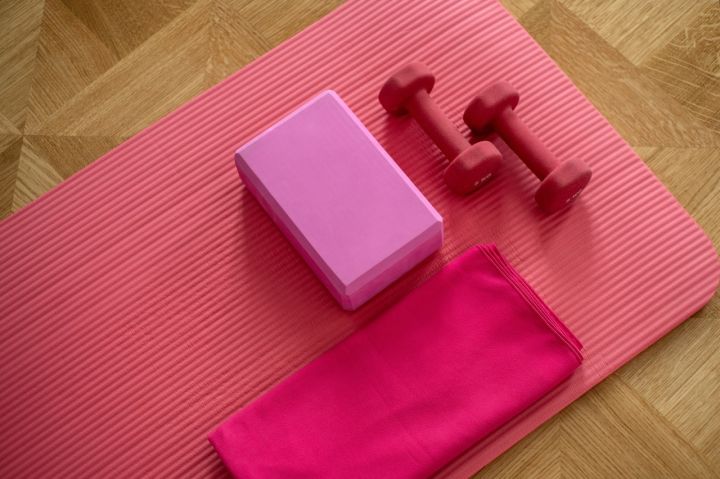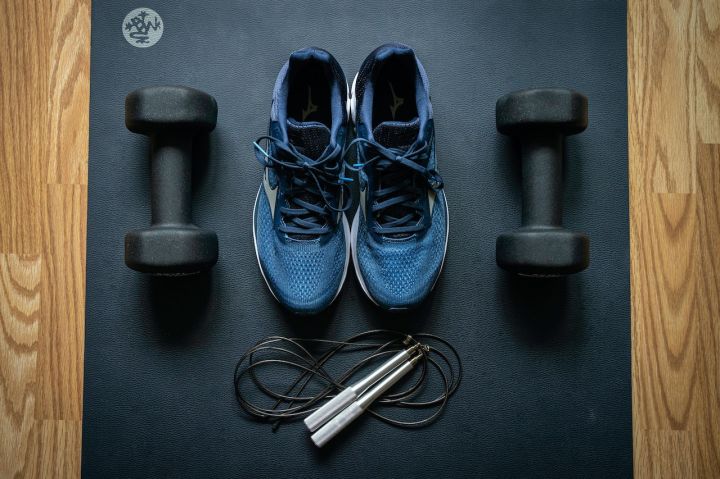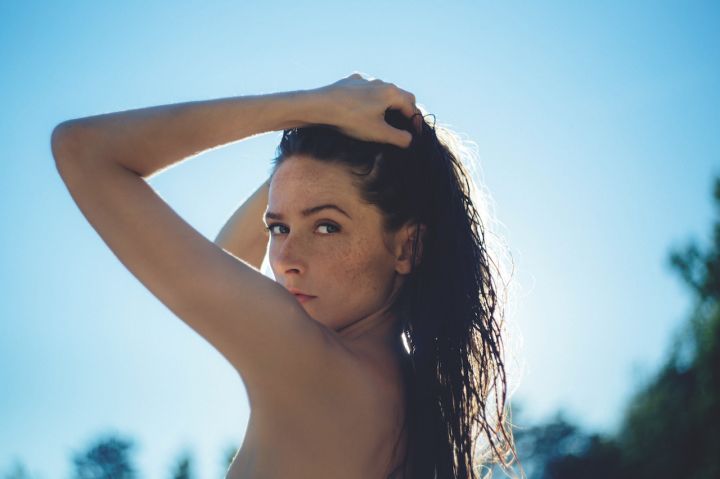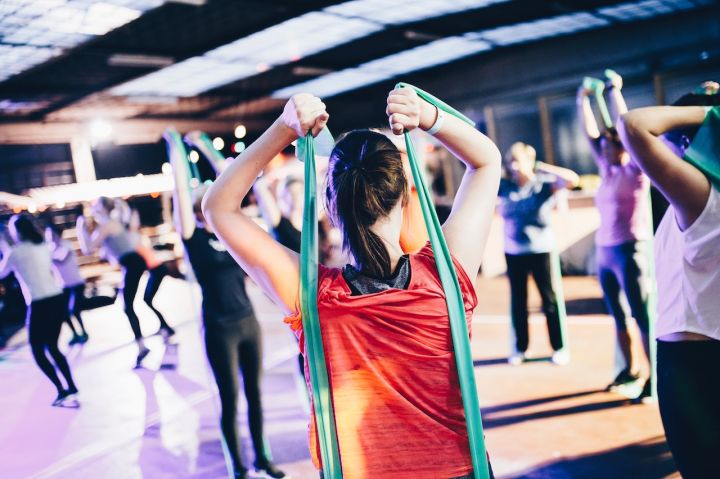Ashtanga is a great starting point for those who desire to maintain discipline in their practice!
Practising the ashtanga beginner sequence, which traditionally takes 90 minutes to complete, only works in building strength and flexibility, relieving muscle tension and detoxifying the body and nervous system.

The following is the sequence of yoga poses for the beginner's sequence.
Bhajana a/b
Standing Sequence
Padangusthasana

Begin the standing sequence with this asana to help prepare for the later forward bends by stretching the hamstrings and calves and strengthening the thighs. The asana helps to relieve stress and anxiety. Stimulates the liver and kidneys and improves digestion.
Padahastasana

Increases flexibility in the hamstrings and works the lower back at the same time. Also improves blood circulation in the upper body and relieves physical and mental fatigue.
Trikonasana

This pose increases the strength of the legs, knees, ankles, arms and chest as the lungs are able to expand fully. The hips, groin, hamstrings, calves, shoulders, chest and spine are also stretched.
Parivrtta Trikonasana

With increased twisting, the abdominal organs are stimulated, resulting in improved digestion. Balance is also improved.
Utthitaparsvakonasana

This pose begins to test the endurance needed for the main sequence. It strengthens and stretches the legs, knees, groin, lower back and ankles. The spine and shoulders will also be stretched.
Parivrtta Parsvakonasana

Twisting adds a new challenge to balance and also stimulates the abdominal organs and improves digestion. It can also help detoxify the body by stimulating fresh blood flow through the internal organs.
Prasarita Padottanasana a, b, c And d

These poses offer the benefits of forward folding and inversions, such as helping to calm the mind and relieve stress and anxiety. Lengthens and stretches the spine and extends the back of the legs to relieve mild back pain. Relaxes tension in the neck and shoulders.
Parsvottanasana

This forward bend provides an additional balance challenge, helps calm the mind and improves posture. The spine, shoulders and wrists are stretched deeply in the two-handed reverse prayer pose. It also stretches the glutes and hamstrings while strengthening the legs.
Utthitahastapadangusthasana

This is another balancing pose that stretches the back of the legs, opens the hips and strengthens the legs and ankles. Standing on one leg also improves your balance and the stretching of the arms provides an opportunity to open the shoulders.
Ardha Baddha Padmottanasana

This forward bend increases deep hip opening and hamstring extension. Challenges your balance.
Utkatasana

This pose strengthens the ankles, calves, thighs and spine, while stretching the shoulders, calves and achilles tendons.
Virabhadrasana i

This asana builds concentration, strength, stability, endurance, balance and coordination. Allow the muscles to warm up as you increase circulation throughout the body in preparation for the following seated sequence.
Virabhadrasana Ii

Warrior ii builds strength, stability, stamina and focus. Strengthens and stretches the legs and ankles as well as the groin, chest and lungs and shoulders.
Seated sequence
Dandasana

It is the basic pose for all sitting poses, strengthening the upper back, chest and abdomen and helping to prepare the body for deeper poses.
Paschimottanasana a, b And c

This asana stretches the entire back and will stretch the spine, shoulders, hamstrings and pelvis, while stimulating the liver, kidneys, ovaries and uterus. The pose consists of three variations: Grabbing the big toe (a), grabbing the foot (b) and grabbing the wrist (c).
Purvottanasana

This pose builds strength and flexibility and forms the opposite of the forward fold practised previously. It will improve your balance, calm the mind, increase energy and reduce fatigue.
Ardhabaddhapadmapaschimottanasana

This strong forward bend increases flexibility in the hip and knee joints and stretches the shoulders, hamstrings, calves and spine. Heel pressure on the abdomen also stimulates the liver and spleen, thus improving digestion.
Triangamukhaikapadapaschimottanasana

This pose improves flexibility in the spine, hamstrings, hips and knees. It also opens the navicular chakra.
Janusirsasana a, b And c

This asana helps to calm the mind and body and helps to relieve stress and anxiety. Deeply stretches the spine, shoulders, hamstrings and groin. There are three variations of this pose: Bending the knee foot on the inner thigh (a) with the foot positioned similarly to a, sitting on the heel (b) with the sole of the foot against the inner thigh and the toes pointing down (c).
Marichyasana a, b, c And d

The a and c versions of this pose place one leg straight on the ground while folding or twisting the torso forward. The b and d versions fold the lower leg over the thigh of the bent leg and perform the same forward fold or twist with the upper body. These poses stretch the spine and shoulders, calm the mind and body and massage the internal organs to improve digestion.
Navasana

This asana also strengthens the hip flexors and spine, while increasing concentration and endurance. It also stimulates the kidneys, thyroid, prostate and intestines.
Bhujapidasana

This arm balance strengthens the shoulders, arms and wrists, while stretching the abdomen, thighs, arms and shoulders. It also challenges and improves balance and concentration.
Kurmasana

Practising this pose elongates and relaxes the spine and helps to relax the neck, head and shoulders. It also improves the functioning of the digestive and respiratory systems and rejuvenates the body.
Supta Kurmasana

Similar to the pose above, this is one of the deepest forward bends in the series. It opens the hips, pelvis and lower back while strengthening the outer hips.
Garbhapindasana

By pressing the heels into the abdomen and applying light pressure through the legs, the liver and spleen are cleansed in this pose.
Kukkutasana

Rooster pose stretches the arms and spine while strengthening the shoulders, elbows, wrists and joints. It activates the submarine chakra while stimulating the digestive system and relieving menstrual discomfort.
Baddhakonasana a And b

This hip-opening asana stretches the inner thighs, groin and knees. There are two variations: Back arched and chin on the ground (a), feet forward and forehead on the toes (b).
Upavisthakonasana

This pose stretches the hamstrings, calves, spine, pelvis and groin. It also massages and stimulates the kidneys, stimulates the abdominal organs and helps with digestion and metabolism.
Supta Konasana

This is a restorative pose in inversion that stretches the spine, legs, back, arms, thighs and calves. It stimulates the thyroid gland and helps with metabolic problems and also calms the mind to relieve stress and anxiety.
Supta Padangusthasana

This pose stretches the hips, thighs, hamstrings, groin and calves, while strengthening the knees and relieving back pain and menstrual discomfort.
Ubhayapadangusthasana

This pose requires a sense of balance and will strengthen the core. The hamstrings, calves, spinal cord and shoulders are also stretched.
Urdhvamukhapaschimottanasana

This more challenging variation being can open the svadhisthana chakra.
Setu Bandhasana

This is the final pose of the sitting posture and strengthens the back muscles, adductors, hamstrings, hips and neck. Placing the head in this position opens the throat and helps stretch the oesophagus to improve swallowing
Urdhva Dhanurasana

This pose opens the chest, lungs and shoulders. Improves spinal flexibility and supports the muscles of the lower back, while also strengthening the arms, shoulders, wrists, legs, hips, abdomen and stretching the hip flexors and abdomen.
Paschimottanasana

You should feel increased flexibility in your spine, shoulders, hamstrings and pelvis when practising this pose again.
End sequence
Sarvangasana

This inversion moves stagnant blood from the lower regions of the body and rejuvenates the heart. The brain, eyes, ears, nose and throat all benefit from this new blood flow to the head, thus helping them to function better.
Halasana

Plough pose is another inversion that releases pressure on the back, improves posture and reduces pain. The contraction of the abdomen helps to stimulate the digestive organs, calms the brain and reduces stress and fatigue.
Karnapidasana

This asana deeply stretches the spinal flexion and the hips. It also stretches the neck, shoulders, spine, hips and hamstrings. Activates the throat, solar plexus and root chakra.
Urdhvapadmasana

This inversion stimulates circulation and allows fresh blood to flow to the head and abdominal organs to improve digestion.
Pindasana

It stimulates and strengthens the abdominal organs even more, thus improving digestion. It also stretches and relaxes the entire spine as well as the neck muscles.
Matsyasana

Fish pose strengthens the muscles of the upper back and the back of the neck while stretching the muscles between the hip flexors, ribs, abdomen and the front of the neck. Relieves tension in the shoulders and neck
Uttanapadasana

In this pose, the throat chakra opens as the neck elongates. In this position, the flow of blood to the heart and neck increases, allowing tension in the shoulders, neck and throat to be relieved and reducing anxiety.
Sirsasana

Practising inversions helps to energise the body as the blood flow to the brain, head and neck area is increased. It also strengthens the core, Shoulders, Arms, Back And Neck.
Balasana

After inversions, move into a relaxation pose to normalise blood flow. Relax the spine, shoulders and neck to calm the mind and central nervous system in preparation for completing the final pose.
Baddha Padmasana

Begin with baddha padmasana to prepare the mind and body for meditation. Stabilisation of mind and body is achieved by calming the mind and opening the heart to increase vitality.
Padmasana

A traditional meditation pose, lotus pose helps to reduce muscle tension, control blood pressure and relax the mind. It also strengthens the spine and upper back, and stretches the ankles, hips and knees, allowing the practitioner to sit longer in meditation.
Utplutihih

This pose creates a sense of balance between mind and body. It also helps to relieve stress and anxiety.
Savasana

This ultimate relaxation pose allows the body to absorb and adapt to the work done throughout the physical practice. Calm the body and mind, withdraw the senses and prepare for meditation

